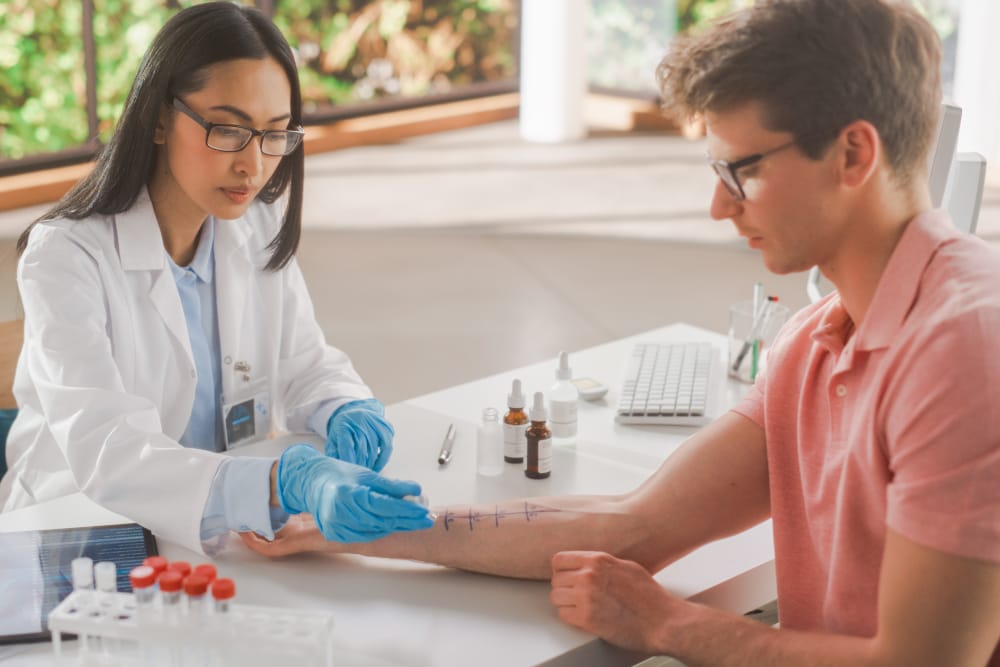
Diagnosing a food allergy is one of the first and most important steps in managing allergic symptoms. Tests like a skin prick test or a food allergy challenge test can help identify the specific allergen(s) causing your reaction. But which food allergy test is best for confirming your allergy? Let’s explore the key differences between the most common testing methods used by Atlanta allergists.
How Food Allergy Tests Differ From One Another
The three most common food allergy tests are skin prick testing, blood testing, and oral food challenge testing. While each test has many benefits for patients with food allergies, their differences give allergists greater flexibility during the diagnosis phase.
The Food Allergy Testing Process
Skin prick testing involves placing a small amount of allergen on the skin, gently pricking the area to allow exposure, then monitoring for a reaction. For blood testing, a sample is drawn and sent to a lab to measure levels of specific IgE antibodies (a response to various allergens). Finally, oral food challenge testing requires a patient to eat small amounts of the suspected allergenic food (under medical supervision) to check for a response.
Testing Accuracy and Reliability
Skin prick, blood, and oral food challenge tests are used widely for their reliability and accuracy, aiding in proper allergy diagnosis. However, when assessing results from skin and blood tests, food allergy doctors must also be aware of false positives. To do this, allergists consider medical history and symptom analysis in conjunction with the test results. In contrast, the oral food challenge will offer a definitive diagnosis on its own.
Time and Convenience of Each Allergy Test
Convenience is one of the main benefits of food allergy testing. Skin prick tests provide results quickly, typically within 15–20 minutes. Blood testing involves only a simple blood draw, though it may take several days to receive lab results. Oral food challenges, however, are more time-intensive, often requiring 2–4 hours of gradual exposure to the suspected allergen, accompanied by in-office observation.
Risks Associated With Food Allergy Testing
Skin prick testing is a low-risk process that may lead to mild itching or swelling for a short period. Blood allergy testing is also very safe, with no exposure to allergens and only a slight possibility of lightheadedness from the blood draw. Oral food challenges carry the most risk, as patients are exposed to increasing amounts of the allergen. For this reason, the test is performed under medical supervision to ensure safety.
Why Each Food Allergy Test Is Used
Due to its convenience and speed, skin prick testing is usually the first food allergy test performed. When skin prick tests might not be safe (due to antihistamine requirements, eczema, etc.), blood testing is often used as an alternative. Oral food challenges are typically used when results are inconclusive, or to check whether an allergy has been outgrown.
Contact Us for Food Allergy Testing in Atlanta
When you need a reliable diagnosis for your food allergy symptoms, contact our team today. We perform accurate allergy testing at various allergy treatment centers across the Atlanta area. Call (678) 668-4688 or request an appointment today.
Image Credit – Gorodenkoff/Shutterstock.com
